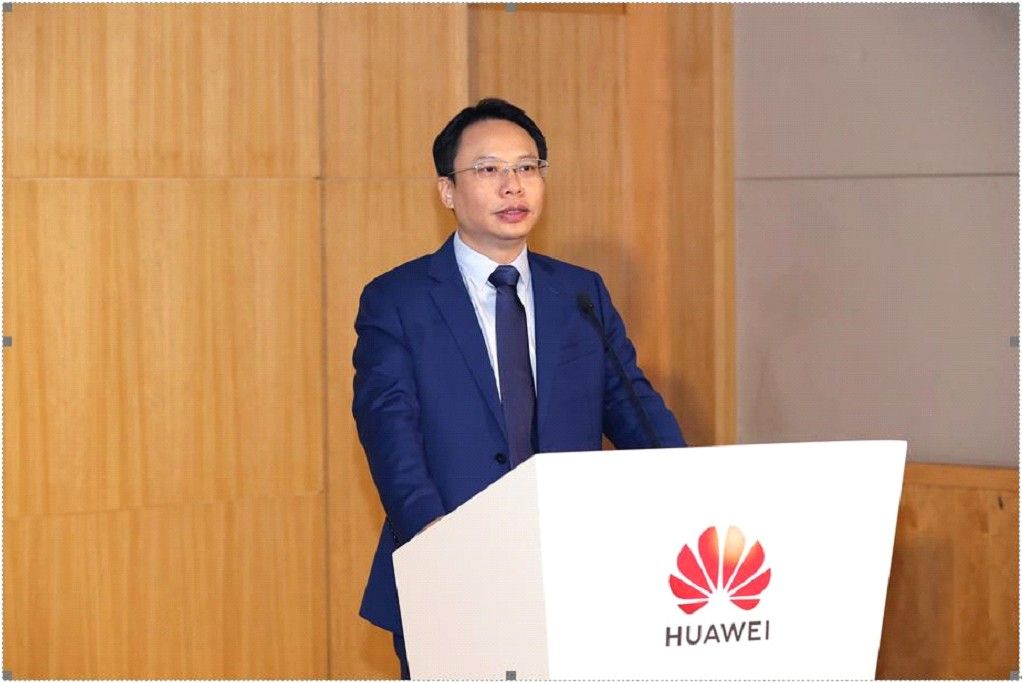(Shenzhen, China, May 19, 2020) Huawei held its annual Huawei Global Analyst Summit in Shenzhen. Eric Tan, Vice President of Huawei CBG Consumer Cloud Service, delivered a keynote speech entitled “Rethink the Seamless AI Experience with the Global HMS Ecosystem”, expressing his belief that Huawei will spare no effort in building its global Huawei Mobile Services (HMS) ecosystem in the coming months and years. By fully opening the chipset-device-cloud synergistic capabilities of HMS Core, and assisting in the development of unparalleled HMS apps, Huawei has committed to working closely with developers and partners around the world, to provide consumers with intelligent services that meet the diverse needs of modern life.

Eric Tan, Vice President of Huawei CBG Consumer Cloud Service
Huawei’s broad-based mobile app ecosystem provides users with immediate access to a treasure trove of smart lifestyle services, encompassing smart travel, media entertainment, lifestyle services, and much more. HMS Core 4.0 represents a key pillar within this flourishing ecosystem.

HMS Core is the platform for the basic open capabilities in Huawei Mobile Services, and HMS Core 4.0, which was released on January 15, 2020, represents a new level of sophistication. It provides more than 20 distinct services for global developers, including Map Kit, ML Kit, Scan Kit, and WisePlay DRM, to name just a few. By March 2020, HMS Core 4.0 had already been integrated by more than 60,000 apps, in such wide-ranging fields as smart transport, entertainment, and lifestyle services.

Map Kit and Location Kit Empower Transport Apps to Provide Precise Location-based Services
Transport is a daily necessity, precisely why ComfortDelGro, a prominent taxi-hailing app in Singapore, has integrated HMS Core Location Kit, Site Kit and Map Kit, as the capabilities enable the app to locate users with a much high degree of precision, and render a clearer, more intuitive map display. Thanks to the super GPS technology packed into Location Kit, ComfortDelGro enables taxi drivers to pick up passengers at the specified curbside location, making taxi-hailing seamless and efficient in a wholly new way.

ML Kit Enhances E-commerce Apps with Sophisticated Product Searching
Find a cool jacket from a friend’s Instagram picture – just use the picture to search for the item online. See a nice bag in a store – take a picture of it, and check if it’s being sold online for a lower price. Apps that integrate HUAWEI ML Kit, such as Banggood, are able to make this wondrous power an everyday reality. Banggood, a comprehensive e-commerce platform, depends on ML Kit for its powerful image processing capabilities, which are able to accurately identity products within 14 distinct categories. This enables Banggood users to search for a desired item with just a picture, and enjoy seamless shopping from the future.

Push Kit Provides E-commerce Apps with Diverse Channels for Reaching Users
As Alibaba’s cross-border e-commerce platform for the global market, AliExpress comes in 18 different languages, providing access to 100 million different items. By integrating Huawei’s Push Kit, which incorporates effective instant messaging, AliExpress has been able to connect a large number of buyers and sellers around the world, send users up-to-the-minute promotions, and improve the shopping experience across the board.

WisePlay DRM: Airtight Copyright Protections for Video and Audio, Free of Charge
Well before the arrival of 5G, streaming video had already been established as a fixture in daily life. Given this, video service providers have attached increasing importance to digital rights management (DRM for short), as it plays a crucial role in copyright protection. Huawei has utilized the unique attributes of the Kirin 990 to establish WisePlay DRM, an end-to-end DRM solution that is ChinaDRM-compliant. WisePlay DRM provides developers with digital copyright protections at both the hardware and software levels, with intricate mechanisms including applying for the client certificate online, encrypting content in multiple formats, and implementing a diverse range of encryption algorithms. Better yet, it supports the online and offline playing of content. The Kirin 990 has been bolstered with high-level privacy and security safeguards, making it the first-ever SoC to have been certified by ChinaDRM for hardware-level security.

In light of the promising early returns for HMS Core 4.0, Huawei will continue to open up HMS Core capabilities, and provide an ever-expanding range of kits. HMS Core works hand-in-hand with global developers and partners to endow mobile Apps with versatile Intelligence, providing users with intelligent services in the 5G era.
We thank Huawei for sponsoring this post. Our sponsors help us pay for the many costs associated with running XDA, including server costs, full time developers, news writers, and much more. While you might see sponsored content (which will always be labeled as such) alongside Portal content, the Portal team is in no way responsible for these posts. Sponsored content, advertising and XDA Depot are managed by a separate team entirely. XDA will never compromise its journalistic integrity by accepting money to write favorably about a company, or alter our opinions or views in any way. Our opinion cannot be bought.
The post HMS Core Working with Global Developers to Endow Mobile Apps with Versatile Intelligence appeared first on xda-developers.
from xda-developers https://ift.tt/3d6bfkH
via
IFTTT












